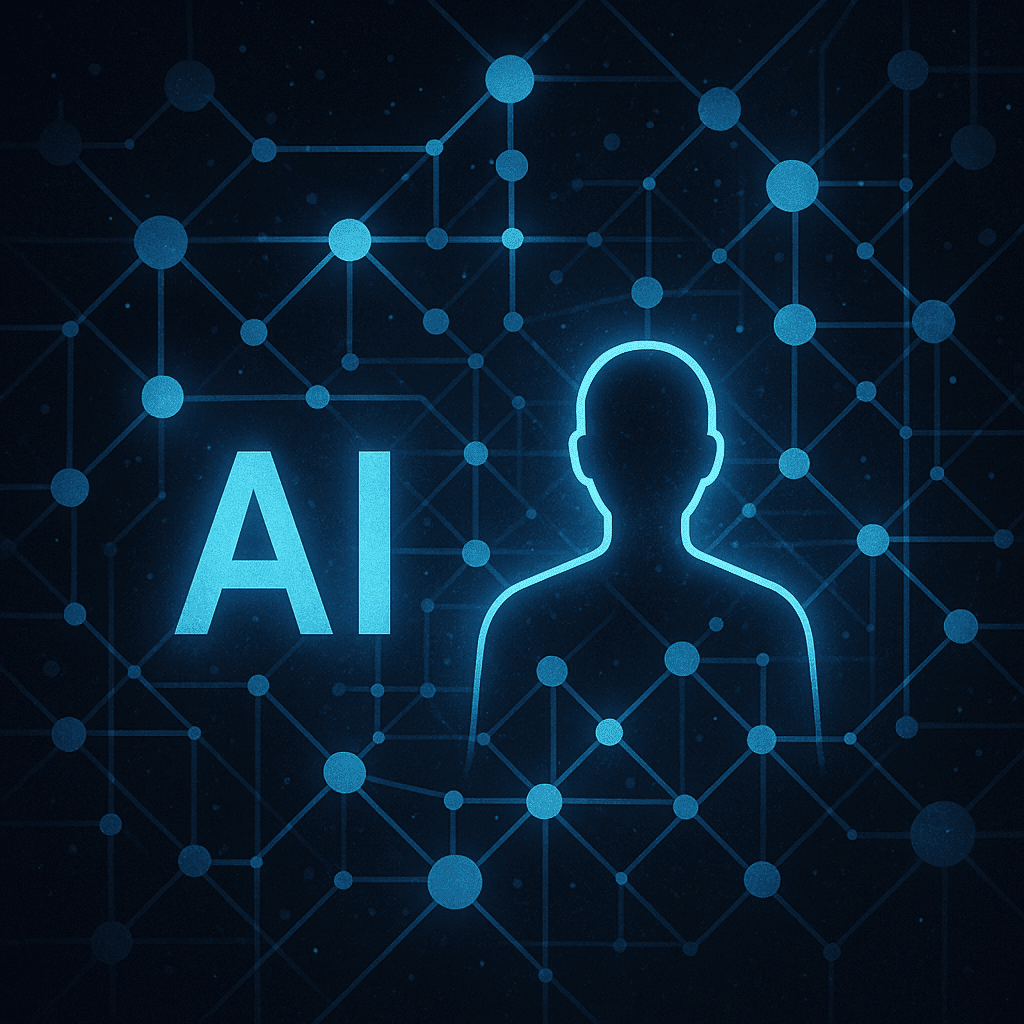Artificial intelligence is no longer just about chatbots that follow a script. A new generation of software known as AI agents is taking center stage. You may have heard the term used loosely, so this article explains what AI agents are, how they work, and why they are becoming important for everyday tasks. It also highlights practical frameworks and real-world uses.
What Are AI Agents?
An AI agent is an autonomous program that perceives its environment, reasons about what it senses, and takes actions to achieve specific goals. Unlike a simple chatbot, an AI agent integrates decision-making, learning, memory, and multi-step planning. The MarkTechPost guide notes that agents can manage data, call tools and APIs, and act without constant human intervention.
Researchers in early 2025 agreed that these agents differ from typical AI systems. They emphasized that agents plan, reason, learn, and interact with their environments to accomplish complex objectives. In practical terms, an agent knows your goal, decomposes it into steps, and executes those steps using available tools. This autonomy makes them more adaptable than traditional automation.
Key Traits of AI Agents
AI agents share a set of core abilities that distinguish them from basic automation:
- Autonomy: Agents operate with minimal supervision. They can initiate tasks and make decisions on your behalf.
- Learning and adaptation: Agents learn from feedback and improve over time.
- Reasoning and decision-making: Agents use models (often large language models) to interpret information and plan actions.
- Memory: Short-term memory helps agents keep context within a session, while long-term memory stores preferences and history.
- Tool usage: Agents can call external APIs, run code, or interact with other software to perform tasks.
- Planning: Agents break down goals into sub-tasks and execute a sequence of actions.
These traits allow agents to handle multi-step workflows, from answering questions to booking flights, without you micro-managing every step.
How AI Agents Work
AI agents are built from several interconnected components rather than being a single monolithic program. Here’s how the parts fit together:
Perception and Memory
An agent first perceives inputs—text, voice, images, sensor data or API responses. It processes these inputs into an internal representation, then stores context in short-term memory and longer patterns in long-term memory. Memory lets an agent recall previous interactions, personalize responses, and learn from past outcomes.
Planning and Decision-Making
Agents rely on a processing module—usually a large language model—to analyze information and decide what to do next. They convert high-level goals into smaller tasks, simulate possible actions, and select a sequence that should achieve the goal. Planning algorithms such as Tree-of-Thoughts or reinforcement learning help them choose efficient paths.
Tool Use and Autonomy
Once a plan is in place, the tool use module allows agents to call APIs, execute code, search the web, or interact with software. This step sets them apart from chatbots: they can fetch live data, perform calculations, or control devices. The agent then evaluates the outcome, updates its memory, and decides whether to take another action. This loop continues until the goal is met. The MarkTechPost guide highlights that this integration of perception, memory, planning, and tool use enables agents to function as cognitive layers over data and applications.
Leading AI Agent Frameworks
Several frameworks make it easier for developers to build and deploy AI agents. According to MarkTechPost’s 2025 overview, the most notable include:
- LangChain: An open-source framework that chains together prompts, tools, and memory. It integrates with services like OpenAI, Anthropic, vector databases, and web scrapers.
- Microsoft AutoGen: Designed for multi-agent orchestration and code automation. It defines roles such as Planner, Developer, and Reviewer that collaborate via natural language.
- Semantic Kernel: A toolkit from Microsoft that embeds AI into applications via “skills” and planners. It’s model-agnostic and supports multiple languages.
- OpenAI Agents SDK: A lightweight SDK optimized for GPT-4. It provides structured workflows with built-in monitoring and guardrails.
- SuperAGI: An agent operating system offering persistent multi-agent execution, memory management, and a marketplace for components.
- CrewAI: Focuses on collaborative teams by defining specialized roles (Planner, Coder, Critic) and coordinating them.
- IBM watsonx Orchestrate: A no-code solution for creating digital workers across enterprise workflows.
These frameworks handle heavy lifting—planning, memory management, and tool integrations—so you can focus on what the agent should accomplish.
Use Cases for AI Agents
AI agents are already being adopted across many domains. MarkTechPost outlines several practical applications:
- IT and service desk automation: Agents route help-desk tickets, diagnose issues, and resolve common problems.
- Customer support and sales: They handle inquiries, recommend products, and even manage returns.
- Contract and document analysis: Agents can extract and summarize data from contracts, reducing time spent by up to 75%.
- E-commerce and inventory management: They predict demand, track inventory, and process returns.
- Logistics and operations: Agents optimize routes and monitor equipment health; UPS reportedly saves hundreds of millions of dollars through AI-driven route optimization.
- HR and finance: Agents process HR queries, automate invoice processing, and perform financial reconciliation.
- Research and analytics: They summarize reports, retrieve insights, and generate dashboards.
These examples show how agents are moving from labs into everyday workflows, saving time and improving efficiency.
How AI Agents Differ from Chatbots and LLMs
It’s easy to confuse AI agents with chatbots or large language models. The MarkTechPost article compares the three. Chatbots are reactive—good for answering specific questions but limited to predefined scripts. LLMs like GPT-4 generate text and provide context but lack persistent memory and decision-making. AI agents combine LLMs with memory, planning, tool use, and feedback loops to create autonomous systems. They are proactive, goal-oriented, and adapt as they execute tasks. This integration makes them powerful but also introduces challenges.
Challenges and the Path Ahead
Despite the buzz, AI agents are not a panacea. Early research highlights concerns about safety, ethics, and control. Fully autonomous agents raise issues of alignment with human values, security risks, and potential misuse. Balancing autonomy with oversight is an active area of research. For example, frameworks like CrewAI emphasize roles that allow humans to audit or override decisions.
Another challenge is evaluating agent performance. Benchmarking initiatives such as AARBench, AgentEval, and HELM are emerging to measure task execution and tool use. You should also be aware of data privacy and transparency when deploying agents in sensitive areas.
On the positive side, the field is progressing quickly. Multi-agent systems, modular architectures, improved planning algorithms, and robust safety protocols are advancing. Many frameworks now provide guardrails and monitoring to mitigate risk. As these systems mature, expect agents to become reliable co-workers that extend your capabilities rather than replace you.
Getting Started
If you’re curious to experiment with AI agents, several resources exist. Open-source templates from LangChain, AutoGen, and SuperAgent allow you to build simple agents without deep coding expertise. Start with a focused goal—such as automating email responses or summarizing documents. Pay attention to memory management and define clear boundaries for what the agent can do. Over time, you can add more tools and refine the agent’s behavior.
For a broader perspective, check out the MarkTechPost guide on agent architectures and the ML-Science landscape analysis that explores evolving definitions and capabilities. These articles provide deeper dives into frameworks, research developments, and future directions.
Conclusion
AI agents are shifting the focus of artificial intelligence from passive chatbots to autonomous partners. By combining perception, memory, planning, tool use, and learning, agents can perform complex, multi-step tasks. They are already transforming IT support, customer service, logistics, and more. While challenges remain around safety, evaluation, and ethics, the momentum is clear. As frameworks mature and best practices emerge, AI agents will likely become an integral part of how you work and interact with technology.
External Resources
You can read more about AI agent frameworks and applications in the MarkTechPost guide and explore research trends and definitions in the ML-Science article.
Internal Resource
For related content on this site, see our earlier post on automation and productivity Internal Link Placeholder. This link will be updated to point to an existing page once the article is uploaded.








